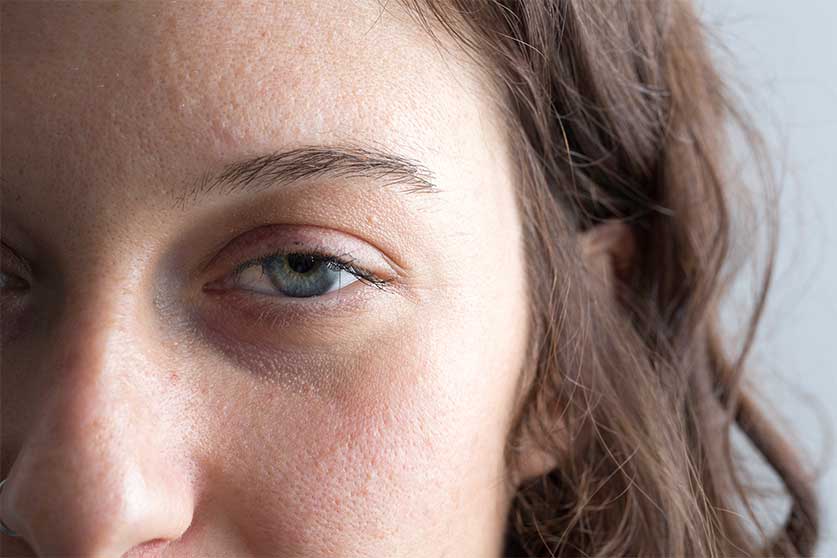Opioid Pupils | Signs Of Opioids Use In Your Eyes

Medically Reviewed By: Manish Mishra, MBBS
Opioids are a family of euphoric central nervous system depressants that impact human eyes and vision in various ways, including shrinking or constricted pupils.

From naturally occurring opiates like morphine and codeine, to fully synthetic opioids like fentanyl or carfentanil, opioid-class narcotics are widely used for severe and chronic pain relief. They’re also widely abused to produce a highly addictive state of euphoria.
Opioids bind to opioid receptors in the central nervous system, mimicking the body’s natural endorphins with a far greater intensity. This causes a cascade of effects that impact systems throughout the human body, including the eyes and vision.
Some of the potential effects of opioids on human vision include:
- constricted pupils
- drooping eyelids
- eye movement abnormalities
- eye infections
- vision loss
Constricted Pupils
Pupillary constriction, or miosis, is a classic symptom of opioid use, especially in high doses. This stems from the drugs’ effects on the parasympathetic nervous system and may cause the pupils to stop changing size in response to changing levels of light.
Pinpoint Pupils
While constricted pupils aren’t dangerous on their own, “pinpoint pupils” are frequently used by first responders to diagnose opioid overdose and can be evidence that a person’s use or abuse of opioid drugs has progressed to a dangerous level.
Drooping Eyelids
Acting as powerful and relaxing central nervous system depressants, opioids may also cause a condition known as ptosis, or droopy eyelids.
This can make it difficult for a person to keep their eyes open and is another telltale sign of opioid intoxication that first responders look for when evaluating a victim.
Eye Movement Abnormalities
Nystagmus, also sometimes referred to as dancing eyes, is yet another telltale sign of opioid abuse, though it can also be caused by other substances and medical conditions.
This condition involves a person’s eyes moving or flickering rapidly and involuntarily, with distinctive patterns of movement that may be horizontal, vertical, or circular.
The effects of opioids on the eyes can also cause strabismus, or crossed eyes. This condition can be chronic, and may even occur in infants and children exposed to opioids in the womb or through breastmilk.
Eye Infections
Drug abuse, including opioid abuse, is a major risk factor for eye infections like conjunctivitis and keratitis as well. This is because opioids and other drugs of abuse exhaust and suppress the immune system, making the body more vulnerable to infections of all kinds.
The use of unsanitary equipment for opioid injection or snorting likewise greatly increases the risk of eye infections among those who abuse these potent and sometimes deadly drugs.
Vision Loss
In some cases, usually following a period of heavy opioid abuse through injection, snorting, or smoking, the optic nerve or other tissues of the eye can be damaged by both the direct effects of the drug and the introduction of bacteria and other foreign particles into the bloodstream.
In studies this damage has reportedly involved eye pain, floaters, photophobia (abnormal sensitivity to light), and eye inflammation in those affected. Permanent eye damage and vision loss may occur.
Other Side Effects Of Opioid Use
The most common side effects of opioid drugs include nausea, drowsiness, confusion, constipation, and changes to heart rate, blood pressure, and breathing.
However, a variety of other potential side effects and adverse reactions are also possible and should be reported to your healthcare provider right away if they occur.
Physical Dependence & Tolerance
Prolonged use of opioids also carries a high risk for the development of tolerance and physical dependence, as well as opioid withdrawal symptoms.
These occur as the body naturally adapts to balance out the effects of the drug over time, gradually becoming more and more reliant on higher and higher doses to produce the same effect.
While physical dependence and tolerance are not the same as opioid addiction (opioid use disorder), they are components and warning signs for it.
Opioid Overdose
Opioids were responsible for over 4,000 Ohio drug overdose deaths in 2021 alone, giving evidence to the extreme danger that comes with opioid misuse.
Mixing opioids with other drugs, whether stimulants like methamphetamine or cocaine or depressants like alcohol or benzodiazepines, multiplies this risk.
There are signs and symptoms of an opioid drug overdose, whether that overdose involves illicit drugs like heroin or fentanyl, or prescription opioids like oxycodone or hydrocodone.
Warning signs of opioid overdose may include:
- pinpoint opioid pupils
- unresponsiveness or unconsciousness
- slow, shallow, or stopped breathing (respiratory depression)
- snoring or gurgling noises
- cold, clammy skin
- blue-tinted lips or fingernails
Any suspected drug overdose should always be treated as a life-threatening medical emergency. Contact first responders, administer the opioid antidote nasal spray Narcan (naloxone) if available, and provide first aid until professionals arrive.
Treating Opioid Addiction
A complete continuum of care for opioid-based substance use disorders may include:
- medical detox services
- short– or long-term inpatient treatment
- dual diagnosis care for co-occurring mental health disorders
- medication-assisted treatment using buprenorphine, methadone, or naltrexone
- aftercare, which may include sober living housing, peer support, outpatient treatment, case management, or other services
To learn more about personalized Ohio treatment programs for opioid abuse and addiction, please contact the Ohio Recovery Center today.
- Centers for Disease Control and Prevention (CDC) https://www.cdc.gov/opioids/basics/epidemic.html
- Data Ohio https://data.ohio.gov/wps/portal/gov/data/view/ohio-ibhd
- Food and Drug Administration (FDA) https://www.fda.gov/drugs/information-drug-class/opioid-medications
- JAMA Ophthalmology https://jamanetwork.com/journals/jamaophthalmology/fullarticle/2663384
- Substance Abuse and Mental Health Services Administration (SAMHSA) https://store.samhsa.gov/sites/default/files/d7/priv/five-essential-steps-for-first-responders.pdf

